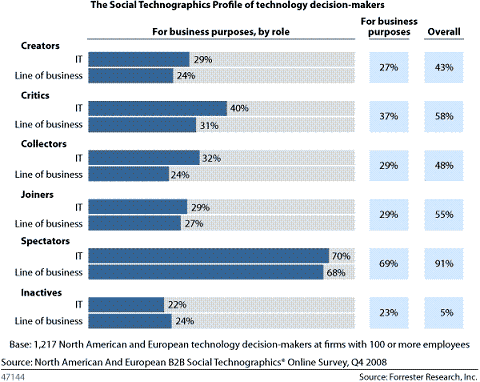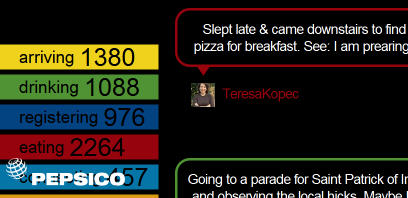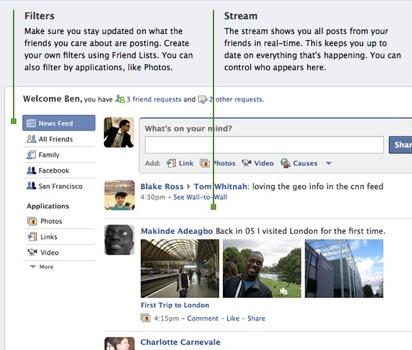Business-to-business (B2B) marketing executives may comfort themselves that they don’t have to think about social media because, “That’s for consumer products.” That excuse has just been exploded by Forrester Research. Although no one should storm into an uncharted jungle unprepared, Forrester advises that B2B marketers had better start donning their pith helmets and sharpening their machetes.
In research findings released last month, Forrester reports the following:
If you’re a B2B marketer and you’re not using social technologies in your marketing, it means you’re late. … [Although there are some strong b2b companies doing well in the social media space], a lot of the blogs, communities, and other social outreach from business to business companies is less than mature, to say the least.
This is your chance to stand out. Take this report and show it to your boss to convince her that it’s time to get started.
This chart shows the Technographics of the B2B buyers they investigated. Although they are an admittedly “plugged-in” audience (they are technology buyers for the most part), Forrester discovered that 91% of the group were Spectators, the highest percentage they’ve ever witnessed in a Social Technographics Profile.

Even the overall Creators (i.e., bloggers, forum posters, etc.) and Critics (those who use social media to rate products and post reviews) are quite high, at 43% and 58%.
The Takeaway
The way businesses buy is changing fast, and in the direction of ignoring the marketer altogether. Instead, they’re talking amongst themselves, in conversations that B2B marketers should ignore at their peril.


